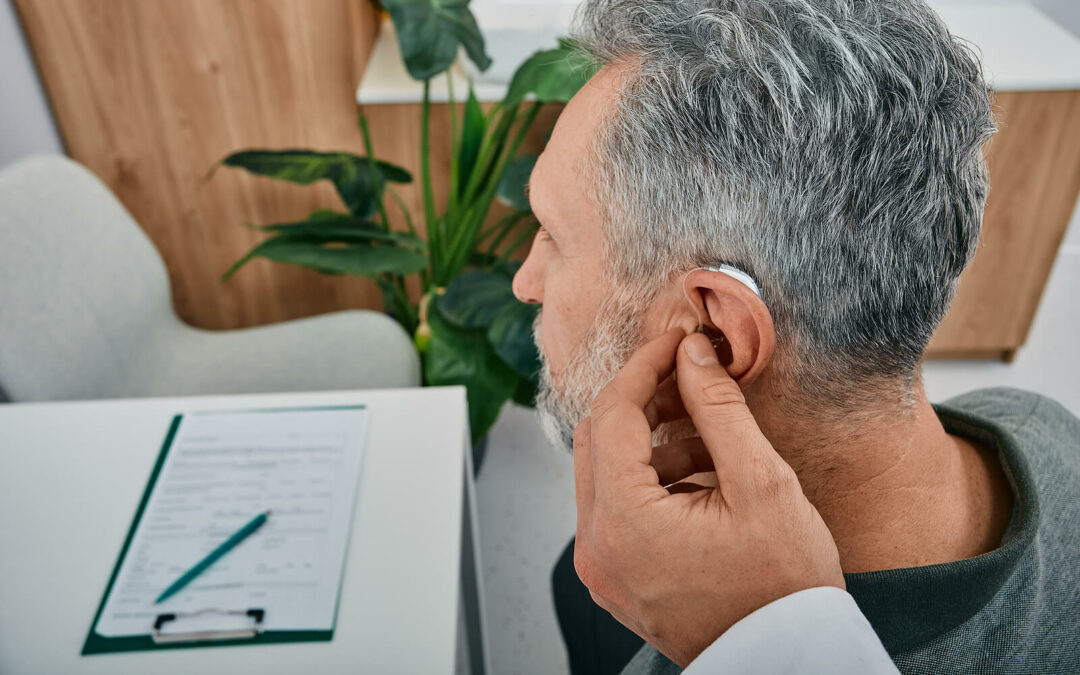Hearing aids are invaluable devices that significantly improve the quality of life for individuals with hearing loss. However, simply wearing hearing aids is not always enough to achieve optimal hearing. Auditory training can be a powerful tool to enhance the benefits of hearing aids, helping users improve their listening skills and overall communication.
Understanding Auditory Training
Auditory training involves exercises and activities designed to improve the brain’s ability to interpret and process sounds. For individuals with hearing loss, the brain may need to relearn how to recognize and differentiate sounds, especially after getting used to hearing aids. Auditory training helps bridge this gap by providing structured practice in various listening scenarios.
When you go for a hearing health exam, your provider might recommend auditory training as part of your treatment plan. This training can significantly enhance the effectiveness of your hearing aids, making it easier to understand speech and enjoy everyday sounds.
Improved Speech Recognition
One of the primary benefits of auditory training is improved speech recognition. Hearing loss often makes it difficult to distinguish between similar-sounding words and understand speech in noisy environments. Auditory training exercises focus on these challenges, helping users practice recognizing different speech sounds and patterns.
For example, a common exercise might involve listening to a series of words or sentences in varying levels of background noise. Over time, this practice can help the brain become more adept at filtering out noise and focusing on the important sounds, such as a person’s voice. This improvement in speech recognition can greatly enhance conversations and social interactions.
Enhanced Listening Skills
Auditory training also enhances general listening skills. Users learn to identify subtle differences in pitch, tone, and volume, which can be especially helpful in understanding different speakers and accents. These skills are crucial in various settings, from business meetings to family gatherings.
Moreover, auditory training often includes exercises that improve spatial awareness of sounds. This means users become better at identifying where sounds are coming from, which can be particularly useful in crowded or noisy environments. Enhanced listening skills contribute to a more immersive and enjoyable auditory experience.
Increased Confidence in Social Situations
Many people with hearing loss feel anxious or self-conscious in social situations because they worry about missing parts of conversations or misunderstanding others. Auditory training helps build confidence by improving the ability to follow and participate in discussions. As users become more adept at recognizing and interpreting sounds, they can engage more fully and comfortably in social interactions.
This increased confidence can lead to a more active social life, reducing feelings of isolation and enhancing overall well-being. Whether at a noisy restaurant or a quiet gathering, hearing aid users with auditory training can feel more assured in their ability to communicate effectively.
Better Adaptation to Hearing Aids
Adjusting to hearing aids can take time, and auditory training can expedite this process. New hearing aid users often need to acclimate to the amplified sounds and learn how to interpret them correctly. Auditory training provides a structured approach to this adaptation, offering exercises that mimic real-life listening situations.
As users progress through their training, they become more comfortable with their hearing aids and learn to maximize their benefits. This better adaptation can result in a smoother transition and a more positive overall experience with hearing aids.
Personalized Training Programs
Auditory training programs can be tailored to meet individual needs. During a hearing health exam, your provider will assess your specific challenges and create a training plan that addresses them. This personalized approach ensures that you work on the areas where you need the most improvement, making the training more effective and efficient.
Programs can include a variety of exercises, such as computer-based activities, one-on-one sessions with an proviider, and group classes. The flexibility and customization of these programs mean that users can progress at their own pace and focus on the skills that are most important to them.
Long-Term Benefits for Hearing Health
The benefits of auditory training extend beyond immediate improvements in listening and communication. Long-term engagement in auditory training can help maintain and even enhance cognitive functions related to hearing and sound processing. Regular auditory exercises stimulate the brain, promoting neural plasticity and keeping auditory pathways active.
This ongoing stimulation can contribute to better hearing health over time, reducing the cognitive load required for listening and helping to prevent further decline in auditory processing abilities. By investing time in auditory training, hearing aid users can enjoy lasting improvements in their hearing and overall cognitive health.
Auditory training offers numerous benefits for hearing aid users, from improved speech recognition and listening skills to increased confidence in social situations. By incorporating auditory training into your hearing health routine, you can maximize the effectiveness of your hearing aids and enjoy a richer auditory experience. Consult with your provder during your next hearing health exam to explore how auditory training can be tailored to your needs and enhance your hearing journey.


